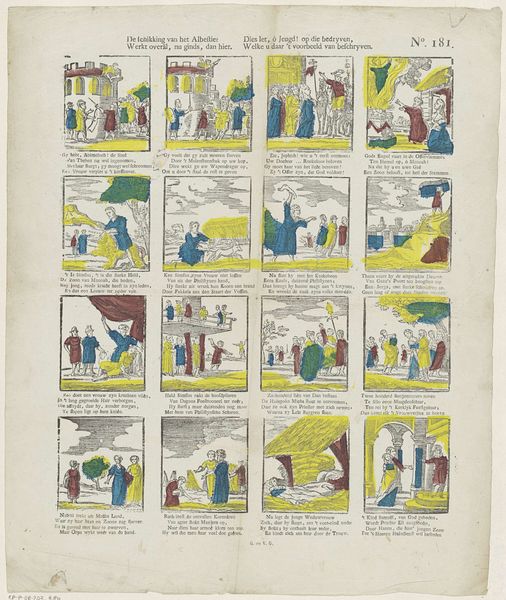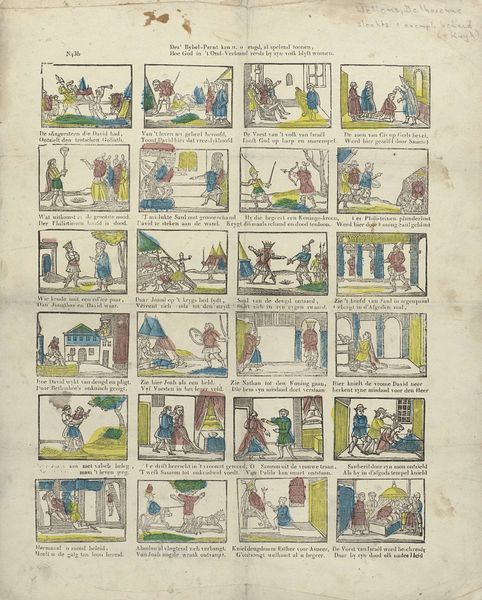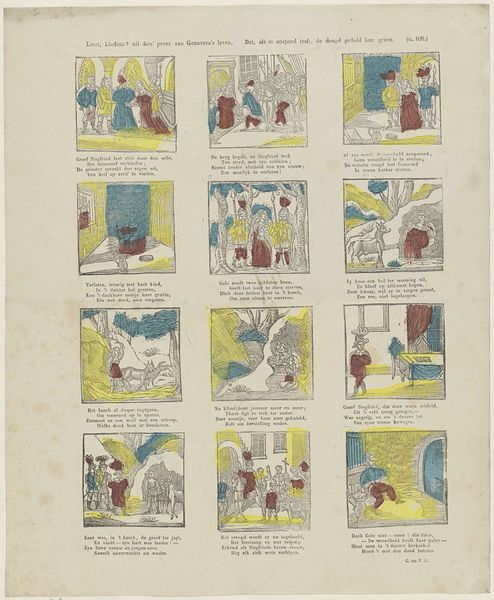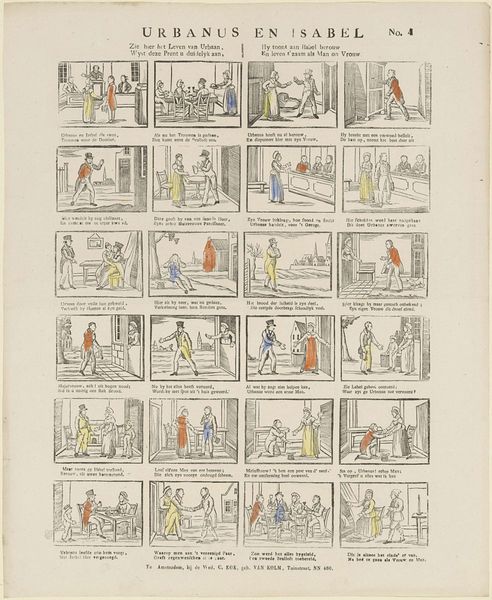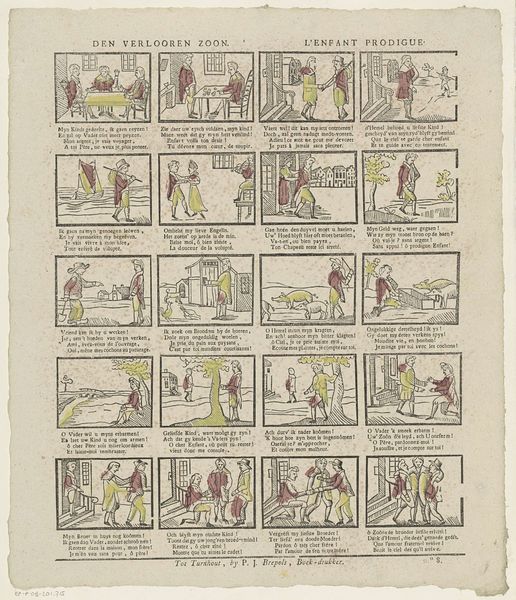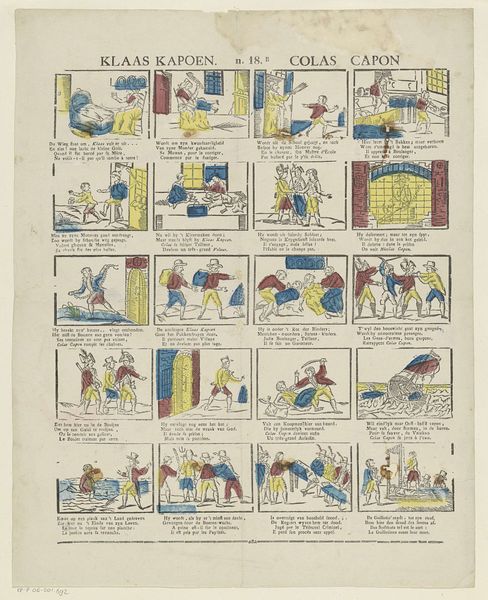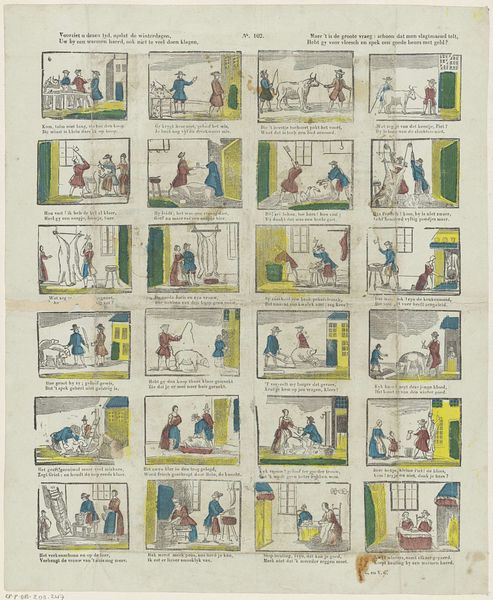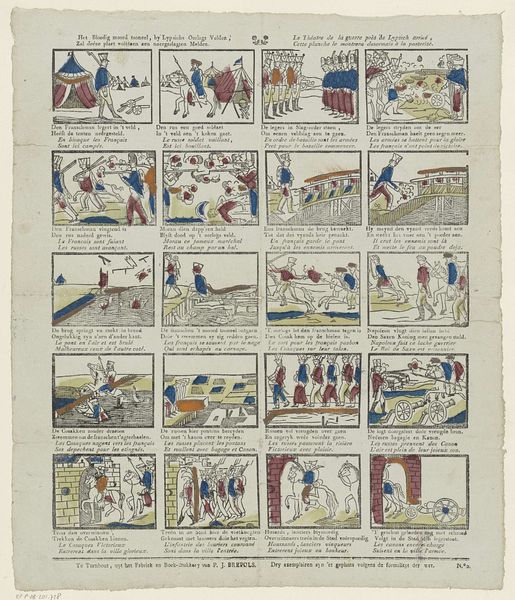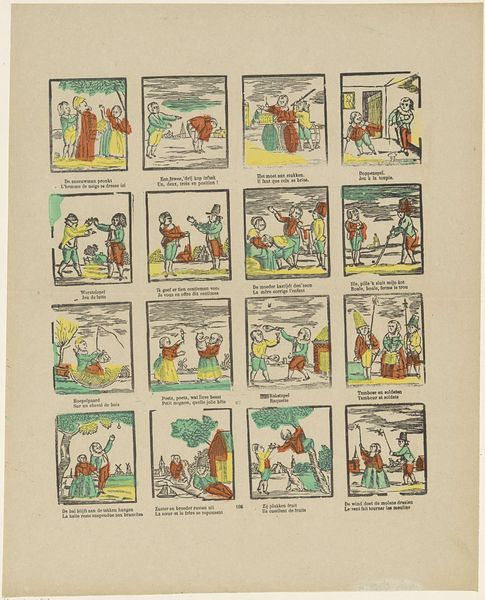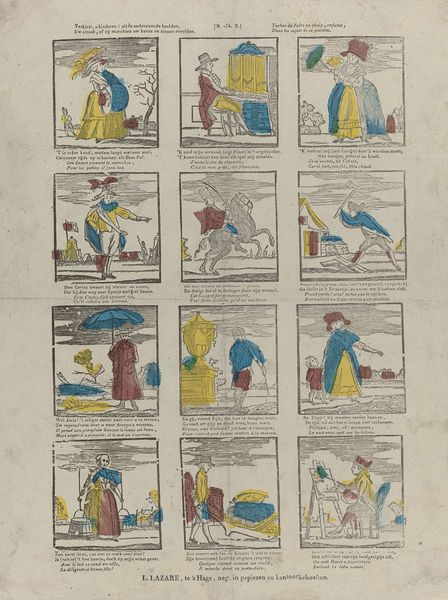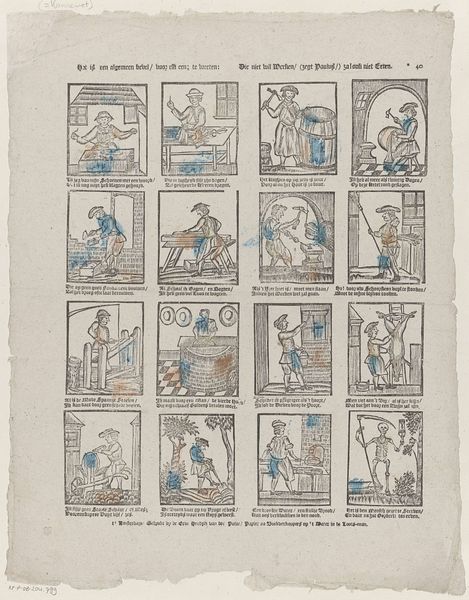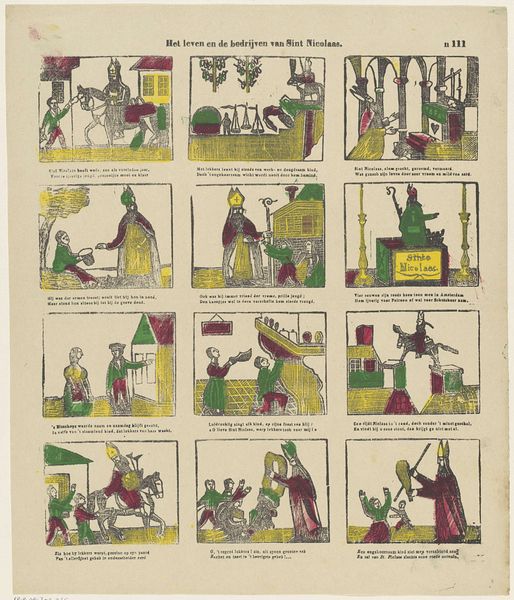
lithograph, print
#
comic strip sketch
#
narrative-art
#
lithograph
# print
#
genre-painting
Dimensions: height 426 mm, width 336 mm
Copyright: Rijks Museum: Open Domain
Curator: Here we have a lithograph dating from the early 19th century, sometime between 1800 and 1833, entitled “De verloren zoon / L’enfant prodigue," or "The Prodigal Son." It’s attributed to J. Th. de Brouwer. What strikes you about it initially? Editor: The whole thing is so interesting, what really catches the eye is the feeling of…folk art meets nascent mass media. These little sequential scenes remind me of early comics, but imbued with such clear moral lessons. The handmade lithograph aspect is super neat to dig into also. Curator: Precisely. The composition, arranged as a grid of vignettes, leads the eye through the narrative with a rhythmic, almost diagrammatic clarity. The subdued color palette lends it a somber, reflective mood. What I love is that we read through the imagery through sequential composition in a deliberate reading process that we do even to this day. Editor: Right, there’s so much going on with the production of prints like this – the social context of the printing industry is key, who the patrons were for this type of instructional narrative – that to me becomes super important. I mean, how was de Brouwer working? What kind of print shop was he running, who did he cater to? Was there division of labor to maximize production here? So many important material details! Curator: Indeed. But beyond the materiality, observe how the artist utilizes line and form to emphasize the emotional states of the figures. The arc of the prodigal son's journey, from exuberance to repentance, is legible not only through the narrative content but through the expressive rendering of posture and gesture. Consider also the religious undertones evident through iconographic presentation of familial expectations. Editor: Agreed. But don’t you find the focus of this iconographic presentation telling in itself about the societal position that folks had in relation to material goods. It makes me ponder how much such considerations may influence the final output for Brouwer, especially with materials like lithography becoming much more democratized around that time. It would not be surprising if it pushed him into moral subjects! Curator: It's a powerful intersection of the tangible and intangible. This work embodies both a structured artistic expression, as well as insights into socio-economic conditions shaping creative decisions. Editor: I agree; the narrative plays on multiple levels by considering religious, structural, and manufacturing choices.
Comments
No comments
Be the first to comment and join the conversation on the ultimate creative platform.
